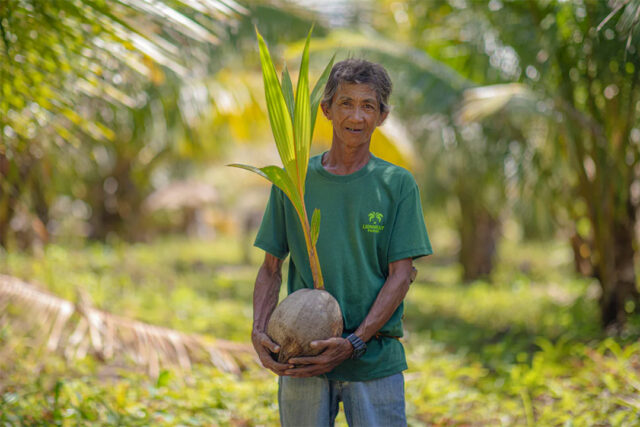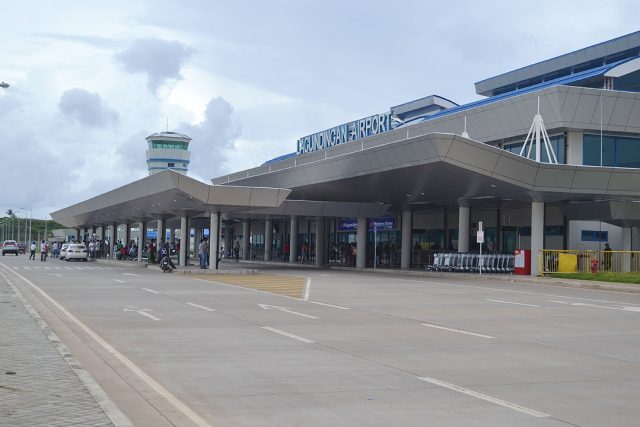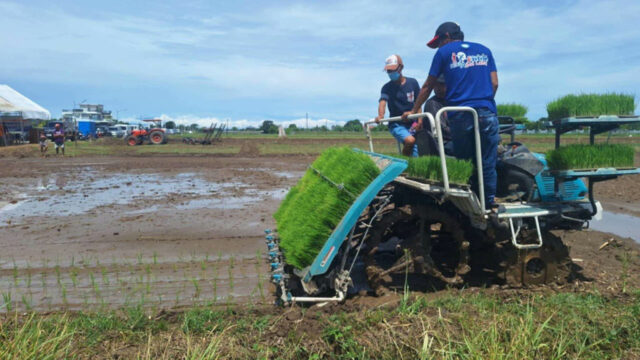Digital transformation in Philippine agribusiness
(Part 1)
The Philippine agriculture sector accounts for about 10% of total GDP but employs some 22% of the Philippine labor force, already exposing the low productivity of those working in farming. It is not a surprise that some 70% of those who fall below the poverty line (16% of the total population and about 22% of total households) are in the farming, fisheries and forestry sector. If we expand the definition from just farming to the entire value chain called agribusiness (which includes post-harvest, storage, logistics, food processing and retailing), the contribution to GDP can rise to 30%. The agriculture, forestry and fishing sector has been the weakest link of the Philippine economy, often posting volume declines and hardly averaging growth of 1% per annum over a 20-year period. If we want to achieve GDP growth rate of close to 8% annually over the next 10 to 20 years to be able to attain high-income status, we must accelerate the growth of the agriculture, forestry and fishing sector to at least 3% annually, a performance already attained by our ASEAN neighbors like Thailand and Vietnam.
Increasingly, with the expiration of the Comprehensive Agrarian Reform Law (CARP), there is a trend towards the bifurcation of the farming sector into two distinct agricultural models: on one side you have the millions of small farmers with two to three hectares of land each in such crops as rice, corn, vegetables, fruits and livestock. These farmers should be the target of government assistance in the form of farm-to-market roads, irrigation systems, post-harvest facilities, agricultural extension services and access to credit. Also playing a vital role in helping small farmers earn income above subsistence is the NGO sector, which includes cooperatives, social enterprises and philanthropic organizations. It must be kept in mind that such help to small farmers is primarily meant to eradicate poverty rather than attain significant increases in productivity. Only the second emerging sector, i.e., the large commercial farms that can attain economies of scale and employ the most advanced technology in agribusiness can help the country attain 8% GDP growth that is necessary for attaining high-Income status, say 20 years from now.
Fortunately, there are increasing signs that large-scale commercial farming is beginning to attract private capital. This is not only true for the traditional large-scale operations like those of banana and pineapple plantations, in which the Philippines has managed to keep up with other countries in Southeast Asia and South America. Now, we are witnessing long-term capital being invested in large-scale farming operations in coconut, palm oil, bamboo and dairy. I have high hopes that, if the BBM administration has the political will to help private investors reconsolidate millions of hectares (especially in the coconut industry) into larger farms of thousands of hectares each, we will see the success story of bananas and pineapples spread to other crops like coffee, cacao, mangoes, avocado, durian, pili, cashew, etc. It will not be easy because of the remaining agrarian reform mentality of some of our leaders. I am glad, though, that the present administration is no longer obsessed with agrarian reform as were past political leaders. I am witnessing small coconut farms being reconsolidated into bigger units through cooperativism, the nucleus estate model perfected by the Malaysians in palm oil production, and the conversion of denuded forest areas into commercial coconut farms. The pioneer in combining these three modes of farm consolidation is Lionheart Farm located in Rizal, Palawan. There are efforts to replicate this model (of about 3,000 hectares of coconuts) in such other regions as Quezon province, Samar, Leyte and Northern Mindanao.
How do we attain the goal of increasing agricultural productivity so that we can start growing at higher GDP growth rates of 8% or above? One answer given by some people in business and academe is to introduce digitalization and other forms of digital transformation into the whole agribusiness sector, starting with farming. This was the topic of a forum organized by the Center for Food and Agribusiness of the University of Asia and the Pacific (UA&P) in collaboration with the Southeast Asian Center for Graduate Study and Research in Agriculture (SEARCA). As mentioned by Annette Dacul, director of the Center for Food and Agribusiness of UA&P in her introductory remarks at the forum, digitalization is one of the strategic directions being implemented by the BBM administration to reverse the unfortunate reputation of agriculture as the sick sector of the Philippine economy. The other three strategic moves are product diversification, which will address the serious problem of overconcentration of our resources on rice to the detriment of many other crops in which the Philippines can be more productive and competitive; farm consolidation as explained above; and industrialization, i.e., processing agricultural materials we produce rather than just exporting them raw whenever commercially feasible. These topics will be addressed in future fora that will be also co-sponsored by CFA and SEARCA.
The agribusiness forum on March 14 on “Digital Transformation in Philippine Food and Agribusiness: Innovation for the Future” served as a platform to bring together key stakeholders in the Philippine food and agribusiness sector to discuss digital transformation and its role in shaping the future of the industry. It could be mentioned here that food security is being given the highest priority by the BBM administration. With rapid advancements in digital and related technologies, the forum explored innovative solutions to enhance productivity, efficiency and market access across the agricultural value chain.
Specifically, the forum and similarly, the other fora planned for the future on farm consolidation, diversification, and industrialization, are aimed at the following:
• Raise awareness: Highlight the importance of digital transformation in agriculture and food systems
• Showcase innovation: Present cutting-edge technologies and practices in farming, postharvest processing, logistics and market access
• Facilitate collaboration: Provide opportunities for networking and partnerships among industry leaders, government agencies, academe and private enterprises
• Strengthen policy advocacy: Advocate for policies supporting the digitalization of the food and agribusiness sector
There were panel discussions on “Digitalization in farm production and postharvest” led by Ana Cecilia Palma, founder and managing director of Yarran Consulting, and Christian Eyde Moeller, CEO at Lionheart Farms; Gilian Santos, CEO and co-founder of Anihan Technologies, Inc.; and Julius Barcelona, CEO at Harbest Agribusiness. The second panel discussion was on “Digitalization in logistics and market access,” which was moderated by Ruel Maningas, program director of the Master in Applied Business Analytics and professor of UA&P with panelists JT Solis, CEO and co-founder of Mayani; and Marc Concio, CEO and co-founder of KITA Agritech. The third panel was on “Financing in digital agriculture” moderated by V. Bruce Tolentino, former member of the Monetary Board with panelists Clarita de la Rosa and Laurence Hidalgo, program officer at LANDBANK; Tony Isidro, CEO at Fuse, the lending arm of GCash and Honorio Flameno, director of DA-ICT Service. The fourth panel discussed “Policy and partnerships” with Roehlano Briones, senior fellow at the Philippine Institute for Development Studies (PIDS) as moderator and panelists Mercedita Sombilla, former undersecretary for policy, planning and regulations at the Department of Agriculture; and Nerita Manalili, managing director at NEXUS Agriculture.
(To be continued.)
Bernardo M. Villegas has a Ph.D. in Economics from Harvard, is professor emeritus at the University of Asia and the Pacific, and a visiting professor at the IESE Business School in Barcelona, Spain. He was a member of the 1986 Constitutional Commission.













